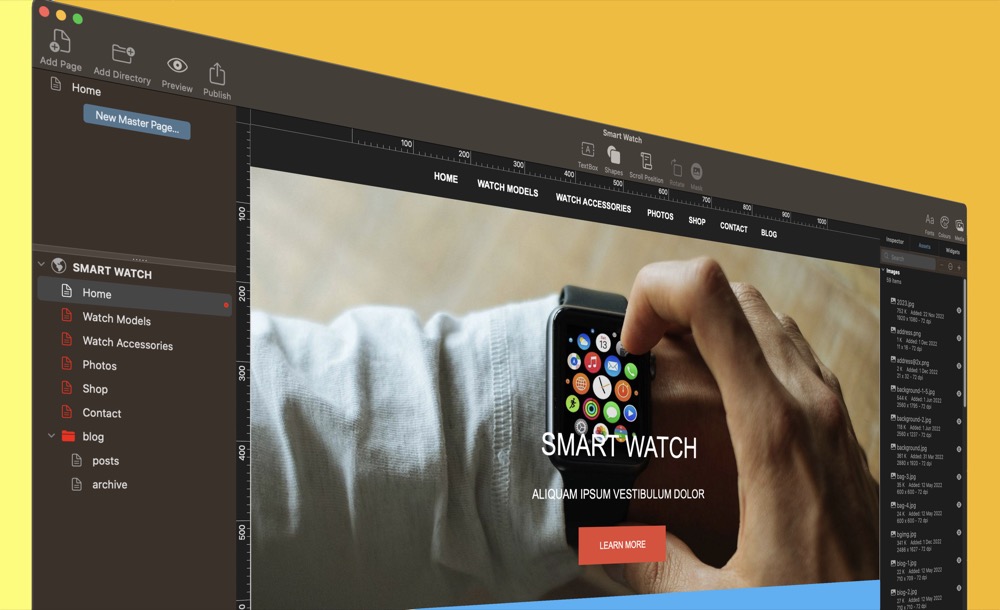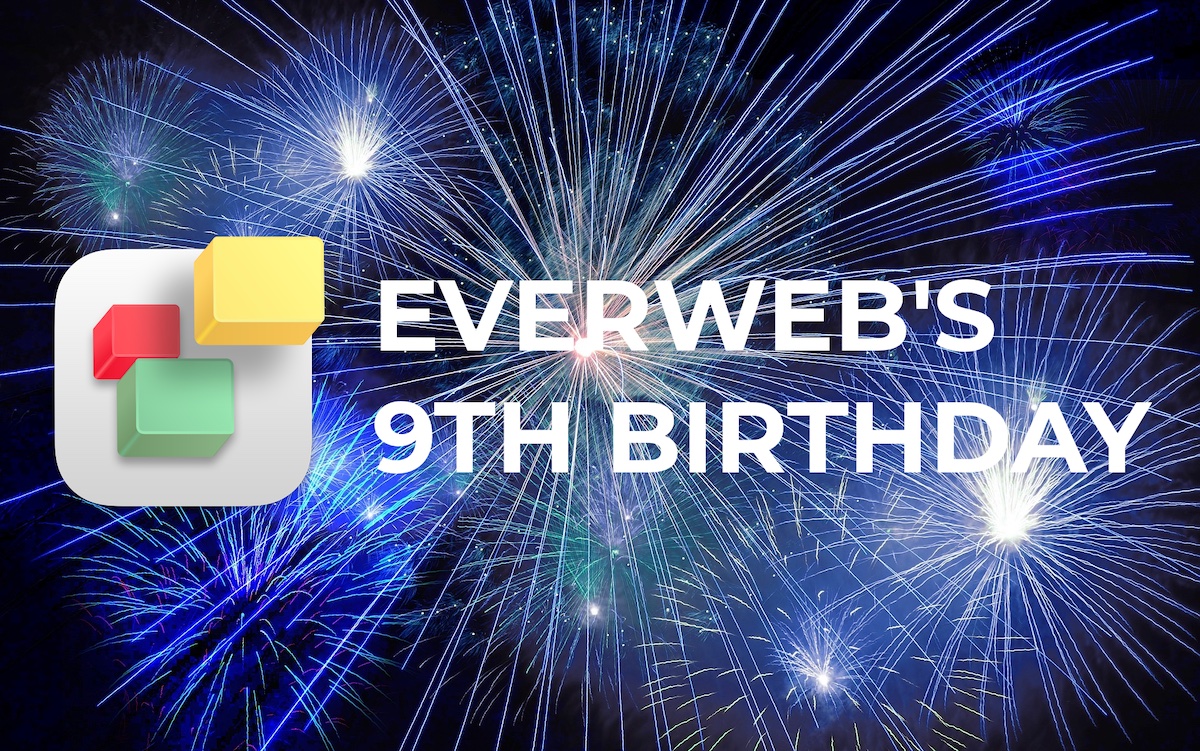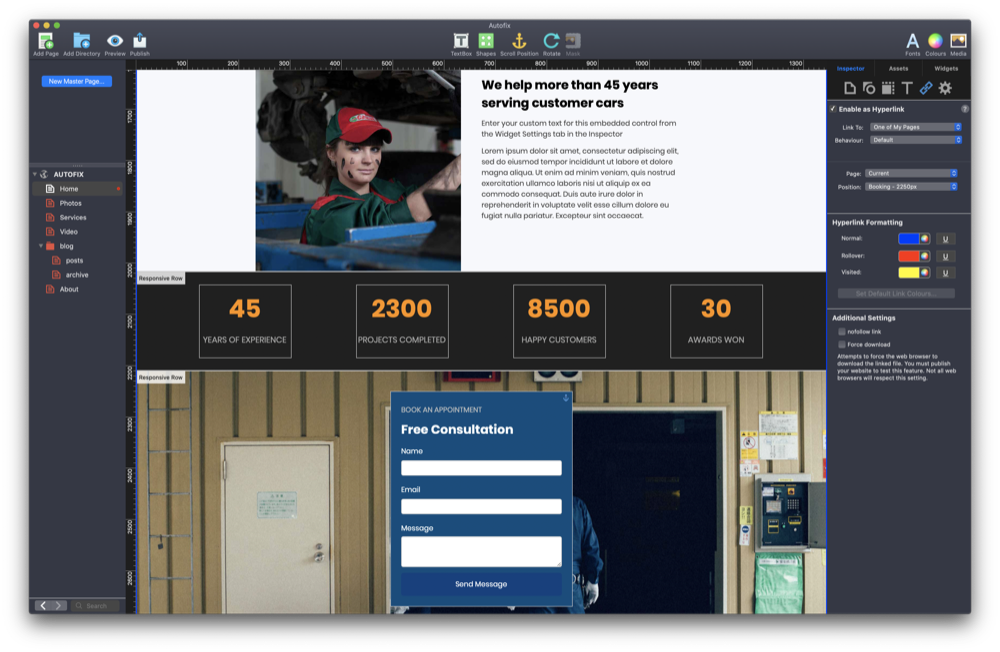Six Ways to Retool Your EverWeb Website for 2023!
Thursday, December 29th, 2022
As 2022 comes to an end, it’s always a good time to take a final look at your EverWeb website for the year and to think about what you want to do with it for the next year. Here are some suggestions as to how you can retool your website for the year ahead!
1. Start by Changing Your Site’s Copyright Year!
The first thing that you should in 2023 is changing your site’s copyright notice year to 2023. Having a copyright notice on your site is a good idea in itself as it shows your visitors that you are the owner of the content of your pages. Although it is not usually necessary, or mandatory, to have a copyright notice, having one reduces infringement risk of your content and claims of “innocent infringement”. Having a Copyright Notice costs nothing and helps deter infringement, so if you don’t have one, add it to the pages of your site and to your blog. Remember, in EverWeb, this is quicker and easier to do if you use Master Pages in your site!
2. Aim For a More Secure Website in 2023!
Keeping your online presence as secure as practically possible should be a priority for any business that has a website. If your site is still using just HTTP, now may be the time to think about upgrading it to HTTPS. If you have an EverWeb+Hosting plan, you can easily secure your site using EverWeb’s Site Shield Addon. In just a few clicks you can secure your site. EverWeb Site Shield Addon has been engineered to make this potentially complex task a super simple one! If you want to maximize your site’s security, you can also take advantage of Site Shield’s new advanced security options! Again, we have simplified these options for you so advanced website security is available for you by just a few mouse clicks.
EverWeb Site Shield Addon is available for only $39.95 USD/Year if you have an EverWeb_Hosting 2GB plan and requires EverWeb 3.6 or higher.
3. Give Your Site’s SEO a Higher Priority
If you are running a business, having a website is one way in which you can expand and grow sales. If potential and existing customers find it hard to find your site, products or services on the Internet, then you probably need to improve your site’s Search Engine Optimization.
Adding and improving SEO in your site can take time and effort, and is something that you should review, maintain and update on a regular basis. EverWeb does help you with SEO by taking the contents of certain fields (e.g. the Web Page Description field in the Page Settings tab) and using it for SEO purposes. You can, however, refine your SEO to be more targeted to your needs easily and without extra cost. Our Free SEO for EverWeb Video Course will show you how!
If SEO is important, or critical, to your business, then using EverWeb’s SEO PowerUp Addon is the tool you need to use. The Addon can be purchased through your EverWeb Client Area ($29.95 USD/Year) and is free for EverWeb+Hosting 10GB or higher plans. The Addon give you the ability to prioritize and set the frequency of when your pages are crawled for SEO purposes, allows you to add in your own SEO keywords on a per page basis, and much more!
4. Spreading Your Word with a Blog
Adding a blog can be a great way to engage with your customers and potential customers. It also gives you an easy way to keep your customers informed about what your latest products and services. A blog is also a great way of providing in-depth information that you would not usually find, or have space for, in the regular pages of your site. You can even use EverWeb’s RSS Feed widget to link blog articles to e.g. the Home page of your site. And a blog also lets your customers know that your site and business are alive and kicking!
Blogging can take some time and planning but once you get in to he swing it can be incredibly rewarding. Checkout the chapter on Blogging in the EverWeb User Manual for more information on setting up your own blog and enabling discussion with your community by enabling Comment Engines.
5. Creative, Consistent Content!
Whatever type of website you have, one of the key things to bear in mind is keeping your site up to date. If you update or refresh your site on a regular basis, it is more likely that visitors will come back again. Keeping your site up to date also means that the information it contains also stays up to date. There’s nothing worse than e.g. visiting a site at the end of 2022 and seeing that its last update was in 2019! As discussed above, a blog can be a very useful tool, especially if most of your site’s content is relatively static.
You may find that refreshing the look of your site from time to time can help, but keeping your content up to date and original is of greater benefit as it will be better for your SEO.
6. Work Smarter, Not Harder…
Keeping your website up to date with fresh content and making sure that your pages are always ‘SEO ready’ may seem to be somewhat of a daunting prospect. But there are ways in which you can work efficiently and effectively. Here are some tips that may help you…
- Plan in Evergreen content for your website and its blog: We all have events in our calendars that repeat every year so why not make a note of these for your site or its blog so that you can have content ready in time for such events e.g. New Year, national holidays, festival days, your company’s anniversary and so on…
- SEO only pages that need it: When it comes to SEO, you do not need to use it on all of the pages in your site. Just pick the pages that are the most important ones in your site to add SEO to.
- When adding images in to your site, make sure the image’s filename is SEO worthy. Additionally, make sure that the size of your image files are not going to drag your page performance down and that you add in ALT Text whenever you can to an image.
- Keep up to date: Every year EverWeb adds new features and enhances existing features. You may find that a new feature replaces an old one, for example, this year we added in-line Heading Tags. You no longer need to use the Heading Tags widget to add in these tags. Now it is simpler and easier to add in these tags and style them, so you may want to replace the ‘old’ with the ‘new’ – it’s more efficient for you in the long run!
We hope that we have given you some food for thought about how you can retool your site for the new year. Got your own tip? Then why not share it? Let us know in the Comments Section below. And if you have any questions, please ask!
Happy New Year EverWebbers!








